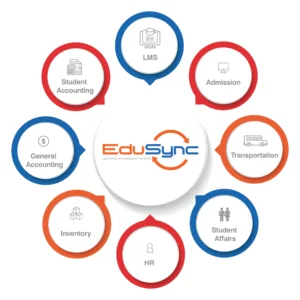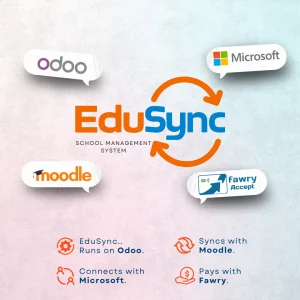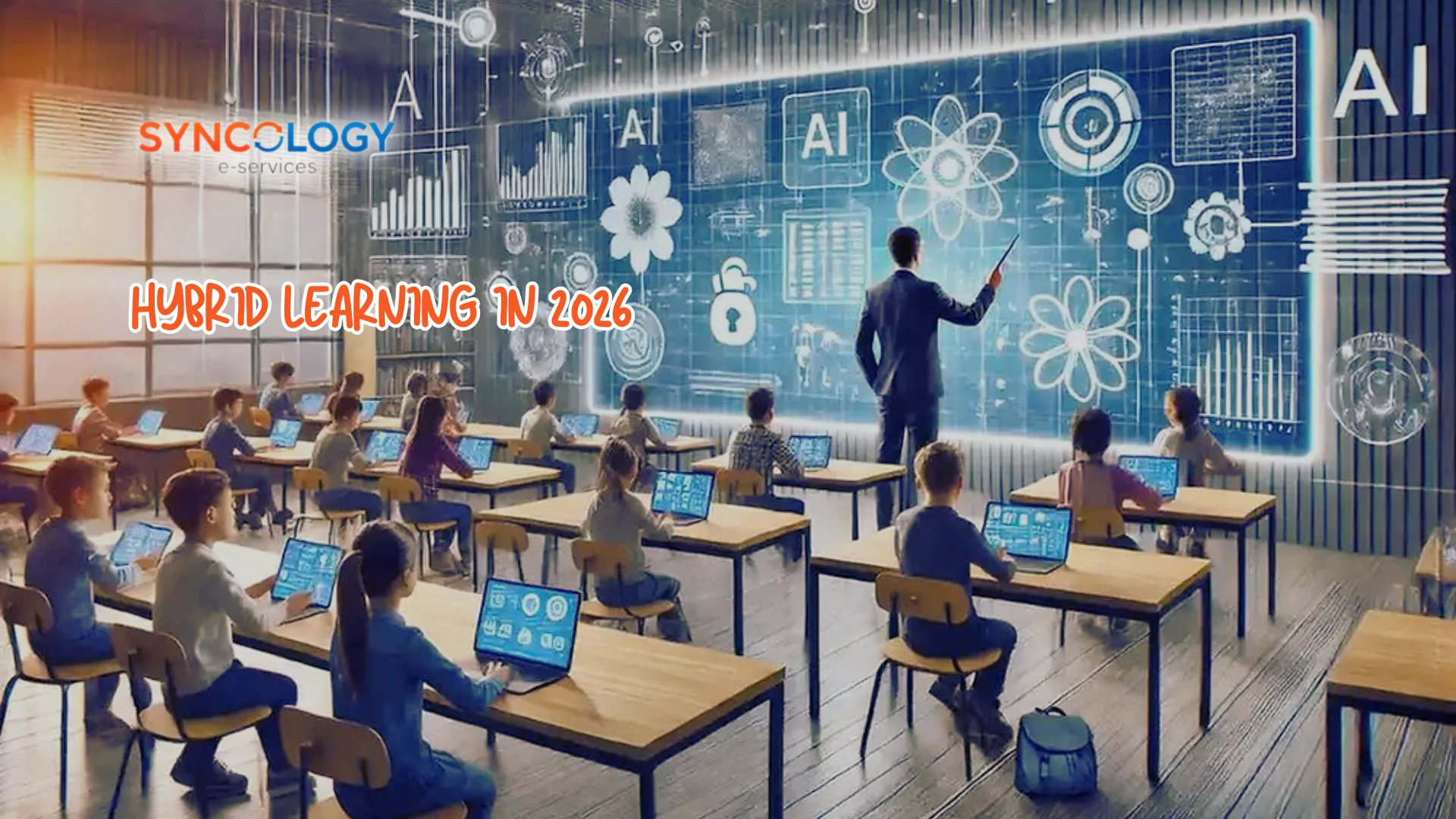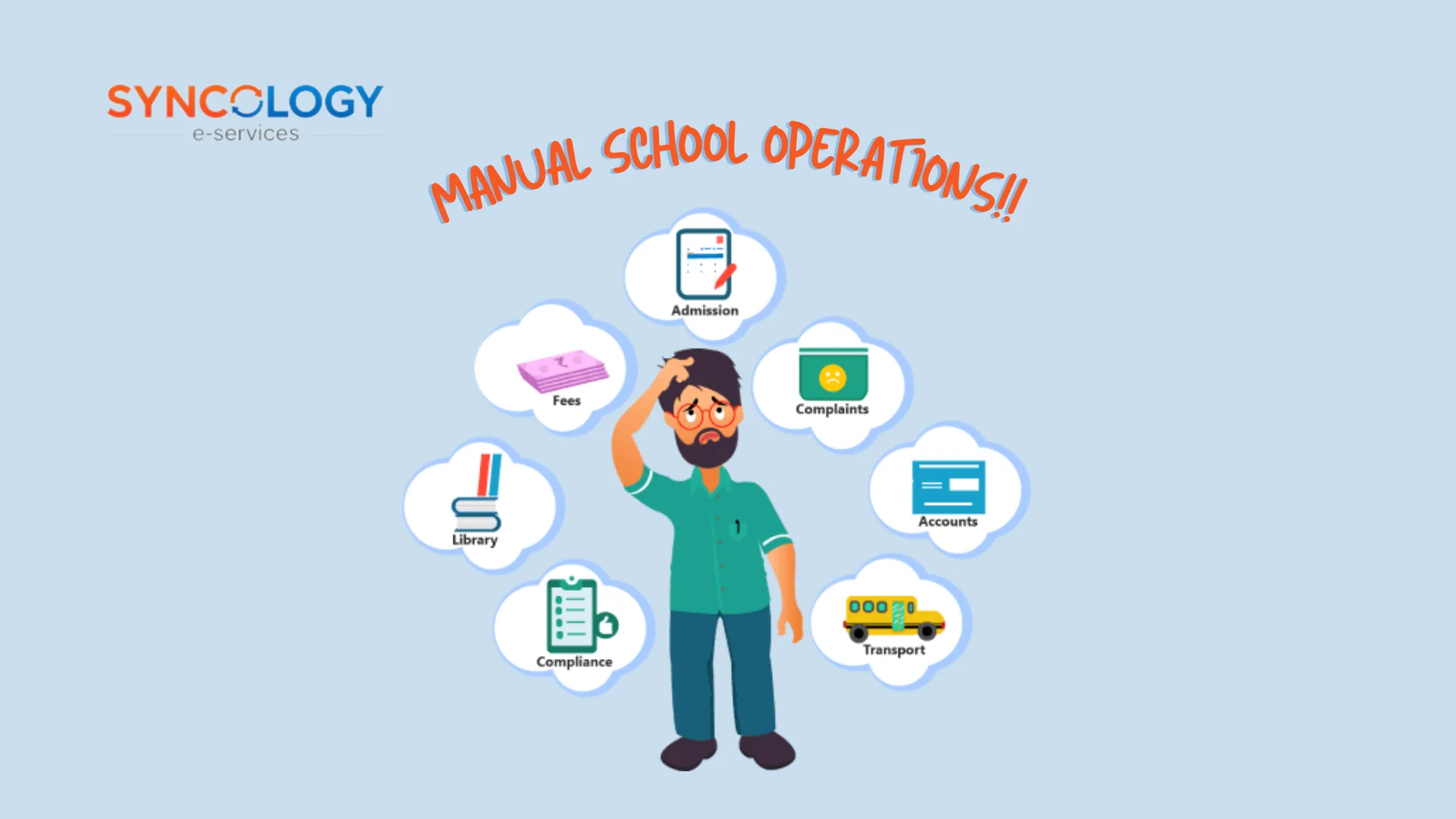
What is an ERP System for Schools? How It Works & Why You Need It
An ERP System for Schools is no longer a luxury!
it’s a necessity. In today’s fast-paced education world, schools face endless challenges: managing finance, HR, admissions, procurement, and student performance while ensuring compliance. Relying on outdated or fragmented tools wastes time, increases errors, and limits growth.
By adopting an ERP system for schools, institutions can centralize daily operations, streamline data management, and make smarter, real-time decisions. This guide explains what an ERP system is, how it works, and why it’s essential for modern schools.
Table Of Contents:
- What Is an ERP System?
- How Does an ERP System Work?
- ERP Systems Features
- Why Schools Need an ERP System Today?
- How To Choose The Right ERP for Your School?
- What is EduSync?
- Conclusion
What is an ERP System for Schools?
An Enterprise Resource Planning (ERP) system is an integrated software solution designed to streamline and automate core business processes—such as accounting, finance, procurement, human resources, and supply chain management—into a single unified platform. By centralizing data and workflows, ERP systems eliminate duplication, enhance efficiency, and provide real-time insights that support smarter decision-making across the organization.
In schools, an ERP system brings all academic, administrative, and financial operations together. making it easier to manage everything from student enrollment and attendance to payroll and accounting in one seamless, digital hub.
How Does an ERP System Work?
An ERP system is built like a structured framework, starting with integrated modules such as finance, HR, procurement, and logistics. At its core is a common database that acts as the backbone, linking every department into one connected network. Schools can then customize this structure by adding the modules most relevant to them—like attendance, payroll, or exams—without being tied to unnecessary extras. To extend its capabilities, ERP also connects with external tools such as CRMs, e-learning platforms, and payment gateways, creating a seamless, scalable system that grows with your institution’s needs.
ERP System Features:
An ERP system comes packed with features that make running schools smarter, faster, and more cost-efficient:
- Unified Database: Stores all school data in one place, reducing errors and duplication.
- Customizable Modules: Add or remove functions like exams, payroll, or attendance based on your school’s needs.
- Tasks Automation: Streamlines repetitive processes such as fee collection, report generation, and payroll.
- Real-Time Reporting: Provides instant insights and analytics to support better decision-making.
- Seamless Integration: Connects with e-learning platforms, CRMs, and payment systems for a complete ecosystem.
- User-Friendly Access: Simple dashboards and role-based logins for teachers, admins, parents, and students.

Why Schools Need an ERP System Today?
In a rapidly changing education landscape, schools can’t afford to fall behind. An ERP system helps institutions stay ahead of the curve by:
- Boosted Productivity: Automates routine tasks, so staff can focus on student success instead of paperwork.
- Smarter Insights: Breaks down data silos, giving school leaders one source of truth for academic, financial, and operational decisions.
- Faster Reporting: Generates real-time academic and financial reports, making it easy to share results and improve performance instantly.
- Stronger Control & Compliance: Enhances visibility across all school operations, ensures regulatory compliance, and minimizes risks.
- Simplified Management: Offers a unified platform where all modules share the same database, reducing IT complexity and making daily operations seamless.
- Greater Agility: Equips schools with real-time data and adaptive tools to respond quickly to challenges and seize new opportunities in education.
How to Choose the Right ERP System for Schools?
Selecting the ideal ERP is about choosing a strategic partner that helps your school thrive in a digital, competitive world. Here’s what to consider:
- Start with Your School’s Needs
Conduct a personalized needs assessment. Pinpoint the vital functions, admissions, fee management, reporting, or academic records that require automation. Tailor your choice to solve your school’s unique operational challenges.
- Prioritize Integration and Ecosystem Compatibility
Choose an ERP that bridges your existing technology stack—LMS, CRM, payment systems, communication tools—into one seamless ecosystem. This eliminates duplicate entries and enhances operational harmony.
- Ensure Scalability and Customization
Your ERP should flex with your school, scaling for growing student numbers, multi-branch expansion, and new curricular demands. It should also allow easy adjustments without costly overhauls.
- Demand Top-Tier Security & Compliance
With sensitive student and staff data at stake, the right ERP must feature encryption, role-based access, audit logs, and compliance with regional data laws.
- Test for Usability, Support & Adoption
Technology is only effective if people use it. Look for a system with an intuitive interface, thorough onboarding, responsive support, and ample training materials to drive adoption among teachers, admins, and parents.
- Evaluate Vendor Credibility & Vision
A solid ERP provider is a long-term ally. Prioritize vendors with proven success in education, clear product roadmaps, regular updates, and a track record of responsive support.
What is EduSync?

EduSync is a cutting-edge ERP system designed by Syncology to streamline operations and integrate all facets of academic administration in educational institutions. By combining School Management (SMS) and Learning Management (LMS) into a single cloud-based platform, EduSync integrates with leading worldwide ERP providers to remove inefficiencies, cut expenses, and guarantee smooth data transfer between departments. From payroll and admissions to classrooms and online learning, EduSync gives schools the resources they need to run more efficiently, grow more quickly, and provide higher-quality instruction. Safe, adaptable, and performance-oriented.
Shortly, EduSync is the ERP solution designed to help schools stay competitive in today’s digital-first world.
Conclusion
In today’s fast-moving digital era, schools can no longer rely on fragmented tools or manual processes. An ERP system centralizes operations, connects every department, and empowers educators, administrators, and students alike. By understanding what ERP is, how it works, and why it’s essential, schools can see clearly that success lies in adopting the right system, one that saves time, reduces costs, and improves outcomes.
If you’re ready to future-proof your school, streamline operations, and stay ahead of the competition, it’s time to make the switch.
👉 [Discover EduSync today and see how your school can transform.]



